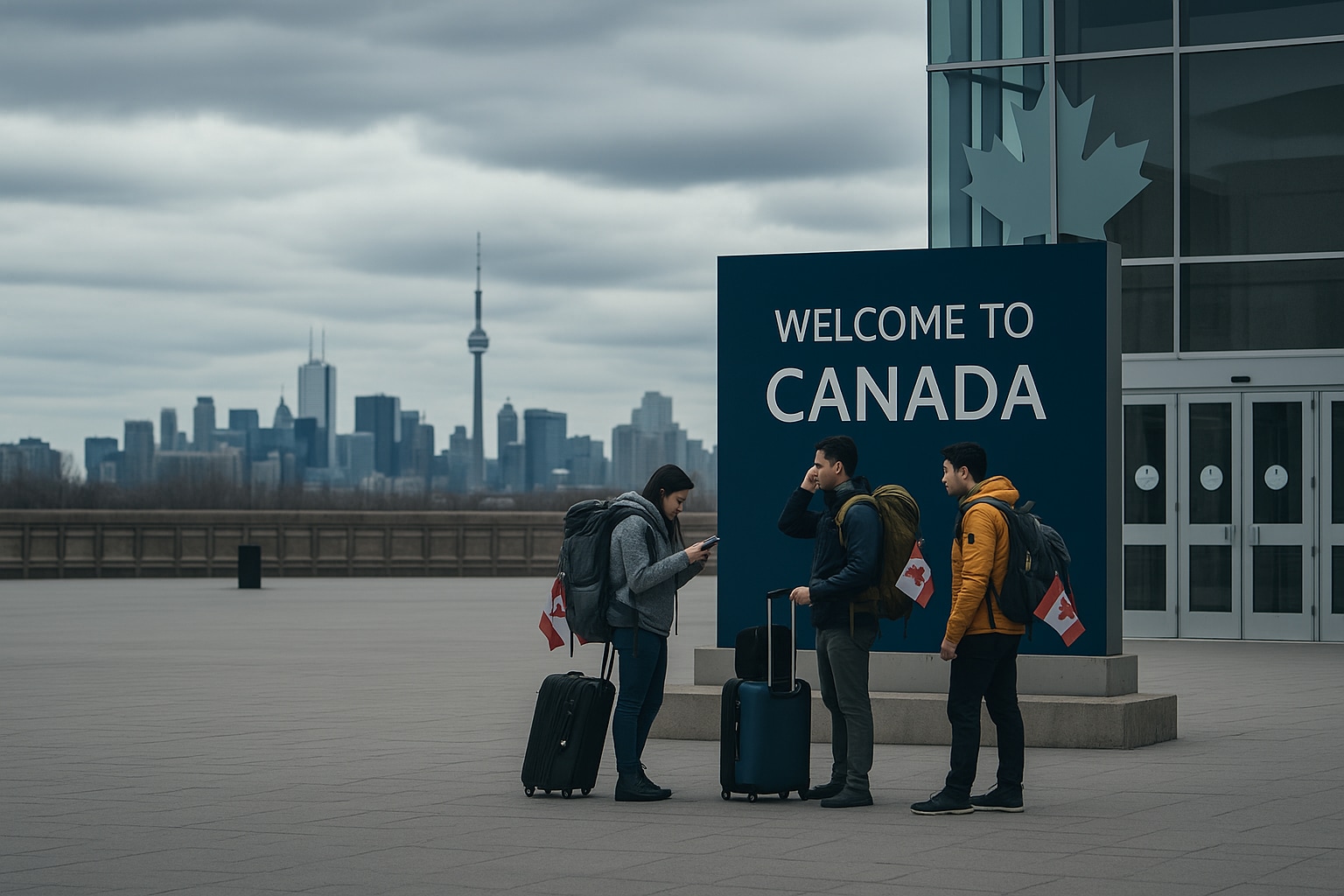Canada’s international education and temporary workforce landscape is undergoing one of its sharpest declines in years. According to official data released by Immigration, Refugees and Citizenship Canada (IRCC), the country recorded a nearly 60% decline in new international student arrivals in 2025 compared to last year.
The number of new arrivals fell by about 1.32 lakh within a year, the change reflecting the impact of sweeping reforms to student and temporary worker programs introduced since late 2023.
Why are fewer students arriving in Canada this year?
The steep drop is directly linked to Canada’s decision to cap the intake of international students and implement tighter eligibility norms under the International Student Program. In early 2024, the federal government introduced an annual limit of 3.60 lakh study permits nationwide to “stabilise growth” and address pressures on housing and infrastructure.
In 2025, the cap was further reduced by 10%, bringing down allocations across provinces and territories. Alongside this, Ottawa made it mandatory for every acceptance letter to be verified through an official process to curb fraud and unauthorised enrollments. The government also increased financial requirements for study permit applicants — a move aimed at ensuring students are better prepared to meet living costs in Canada’s high-inflation environment.
These changes, coupled with slower processing of applications submitted under earlier rules, have significantly reduced new arrivals this academic year.
As per official data, only 45,380 new international students arrived in August 2025, a sharp fall compared to pre-pandemic averages when monthly arrivals often exceeded 100,000 during peak intake seasons.
Month/year
New international student arrivals
August 2024
117,400
August 2025
45,380
Year-on-Year Change
–61% (approx.)
What’s behind the policy shift?
The government has emphasised that the goal is not to restrict genuine talent but to make immigration “sustainable and better aligned with labour market needs.” In a statement, Immigration Minister Marc Miller said the new limits are intended to “return temporary resident levels to below 5% of Canada’s population” in the coming years.
Story continues below this ad
Concerns had been growing around the surge of short-term residents, particularly international students, who faced housing shortages, high rents, and limited employment opportunities. The government has said that these changes are meant to ensure better outcomes for both students and host communities.
Post-Graduation Work Permit (PGWP) changes add to the slowdown
In line with the student cap, Canada has also revised its Post-Graduation Work Permit (PGWP) Program, which previously allowed most international graduates to work in Canada for up to three years after completing their studies.
The updated policy now restricts eligibility to programs and institutions that align with national immigration and labour goals. This means certain private college partnerships and shorter-duration programs no longer qualify, leading many prospective students to reconsider their study destinations.
These measures have not only affected new study permit issuances but have also slowed down the transition of international graduates into the labour market, indirectly reducing the overall number of temporary residents.
Tightening rules for temporary workers: What changed?
Story continues below this ad
The decline in temporary foreign workers has mirrored the student trend. The Temporary Foreign Worker Program (TFWP) was overhauled through several announcements in September and October 2024. The government imposed a 10% cap on low-wage hires (increased to 20% only for certain in-demand sectors like agriculture and food processing). Moreover, applications for low-wage positions are no longer processed in urban regions where unemployment exceeds 6%.
High-wage roles were also reclassified by raising the minimum wage thresholds, making it harder for employers to hire foreign workers unless absolutely necessary.
These reforms are designed to prioritise Canadian jobseekers while preventing wage suppression. The Employment and Social Development Canada (ESDC) has said it expects the number of work permits and extensions to decline steadily through 2025 as these rules take effect.
Work and study permits in numbers: How 2025 has been so far
As of August 31, 2025, Canada had a total of:
Story continues below this ad
—514,540 people holding only study permits
—1,489,645 holding only work permits
—287,885 holding both study and work permits
This marks a notable reduction from 2024 levels, when the combined total of temporary residents exceeded 2.8 million. The trend indicates that the government’s measures to “restore balance” in the temporary immigration stream are beginning to reflect in real-time data.
Permit Type
Number of Holders (Aug 2025)
Change from 2024
Study Permit Only
514,540
↓ Significant decline
Work Permit Only
1,489,645
↓ Moderate decline
Both Study + Work
287,885
↓ Noticeable decline
Are these reductions here to stay?
According to the 2025–2027 Immigration Levels Plan, Canada intends to “recalibrate” its temporary resident population while maintaining strong targets for permanent immigration. The emphasis is on creating a better transition pathway for skilled international graduates and workers rather than relying on temporary streams.
Officials have stated that it will take a few more months for the full effects of these policies to show in national statistics since pending applications are still being processed under old rules. However, the downward curve in both student and worker arrivals signals a clear policy direction: fewer temporary entrants, more sustainable growth.
Story continues below this ad
What this means for Canada’s global appeal and broader implications
The combination of caps, stricter eligibility norms, and reduced work rights for spouses has prompted some students to explore alternative destinations such as Germany, Australia, or turn to other traditional choices like the UK. However, while the government insists the reforms are temporary and essential to preserve public support for immigration.

